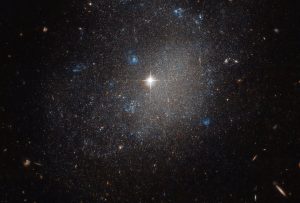NGC 4707
Puntinismo stellare
In una limpida notte dell’aprile 1789 l’astronomo William Herschel, mentre proseguiva la sua inarrestabile esplorazione del cielo notturno, individuò un nuovo oggetto cosmico ed ebbe occasione di festeggiare! Incrementando la sua lista straordinaria di scoperte ancora una volta, l’astronomo osservò questa brillante galassia a spirale, chiamata NGC 4707, nella costellazione dei Cani da Caccia. NGC 4707 si trova a circa 22 milioni di anni luce dalla Terra. Continua a leggere
